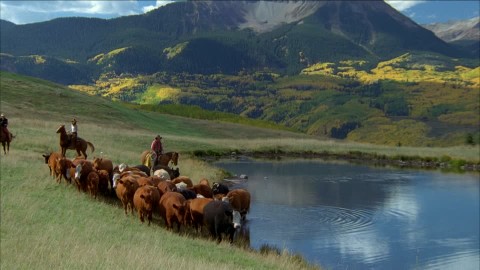Federal land managers and environmental industry lawyers are back in court, rearguing a decade long case about livestock grazing permits. It is a generational debate that finally shows an emerging consensus, though this lawsuit clarifies it’s not universal.
Throughout the 1990s when I was at Club 20, one of the Western Slope’s more contentious issues was grazing on public lands. Ranchers and land managers insisted that grazing was a positive benefit; environmental groups claimed it destroyed the landscape. The Sierra Club had tried to strike a balance in 1992 with a policy statement, “The goal of the management of grazing on the public lands is to restore and maintain fully functioning natural ecosystems…”
Yet by the end of that decade, its own chapters, in step with nearly the entire environmental industry, were still challenging most grazing permits, and publishing articles claiming that “There is no credible scientific evidence that any grazing management method can actually accomplish that goal.” Rather, as one state chapter insisted in 1999, “Livestock grazing on public lands is the most damaging extractive use of U.S. public lands; more damaging to our natural resources than logging and mining.”
Even as recently as 2013, a paper published in the journal Environmental Management called for a complete ban. Its conclusion was that global warming “necessitates the end of livestock grazing – in fact, any grazing – on public lands.”
Since then, there has been a little-noticed but profound shift in the thinking of the mainstream environmental industry. That’s because experience, especially with the last few years of catastrophic wildfires, has shown researchers and activists what cattlemen have always known. Namely, as the Nature Conservancy now says, “Livestock grazing… can help secure clean water, enhance habitat, address climate change and sustain rural communities.”
That growing understanding has fueled what is now called the “regenerative agriculture movement.” A speaker at California’s annual Soil Not Oil conference said the concept “is quickly building momentum, its ideas spreading among environmentalists, food activists, and even the general public.” He explained the underlying conclusion that “well-managed” grazing is “central to restoring ecosystems, fighting desertification and climate change, and building sustainable food systems.”
What a change of heart. Now it turns out that one of the Sierra Club’s most determined strongholds, the City of Boulder, is actively using cattle for managing its own public lands. A few years ago, the experiment started with bringing a small herd into an area called Shanahan Ridge, where invasive weeds were choking out native plants. It was so successful it has been continued every spring for nine years, with a herd of about 75 cows, including cow-calf pairs. The area has recovered dramatically and is a favorite public hiking spot.

Last year, though, something else happened there, which opened the eyes of environmental activists across the country. A wildfire broke out near the neighboring National Center for Atmospheric Research, causing the evacuation of 19,000 people and destroying about 200 acres. But when the fire reached the grazed land, it immediately slowed and the damage was “significantly less,” as Boulder’s own program director said. “Where the cows had grazed, the fire damage was minimal. Where they hadn’t, the ground was scorched.”
Boulder now says the evidence demonstrates that beyond controlling invasive species and restoring native plant systems, the cows also reduce wildfire risk. That is now being discussed across the West as an important wildfire mitigation strategy.
Cattlemen always explained that hoofprints become micro-pools that collect water and thereby help native grasses grow, restoring natural vegetation. We now know they also help reduce fuel loads, especially the dry vegetation that becomes kindling for wildfires.
By 2021, even the New York Times was touting “A different kind of land management: let the cows stomp,” showcasing a former pastureland that is now weeds, and the cattle being brought back to restore it.
The current legal case is a throwback, an out-of-step environmental group still suing BLM over its decision to allow grazing on part of the Sonoran Desert. The area was an 11th-hour national monument designation by President Clinton, with a stipulation protecting existing grazing leases on the north half of the monument. But BLM’s management plan was immediately challenged in court and a judge blocked all grazing in 2016. Rewritten plans are still being challenged, including a new Biden Administration version.
It is still an uphill climb to convince the remaining skeptics that properly managed grazing can be a positive benefit, not only to the economy and food supply, but also to the land.




Comments on this entry are closed.